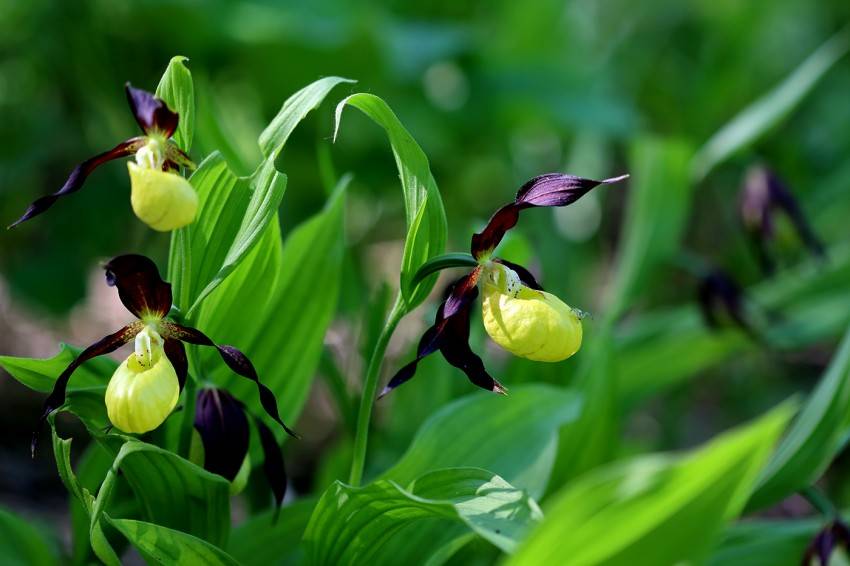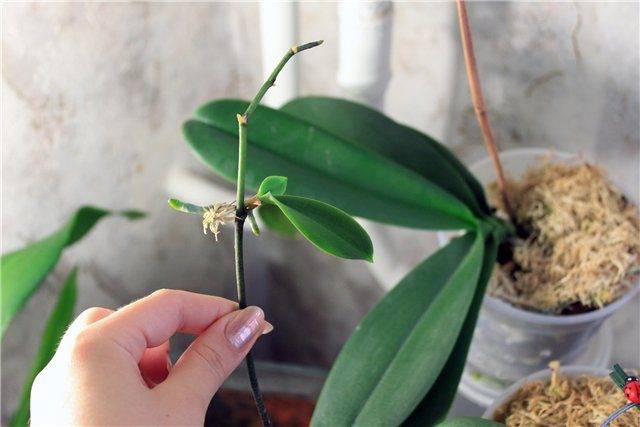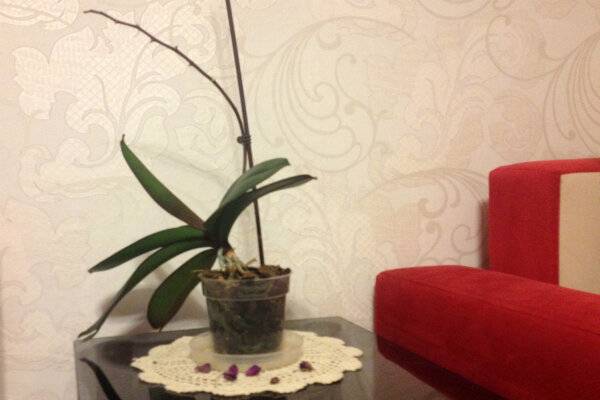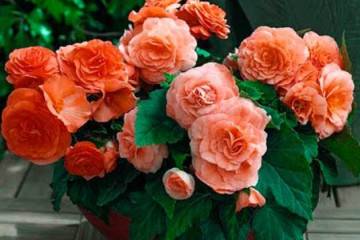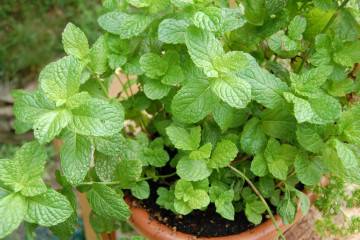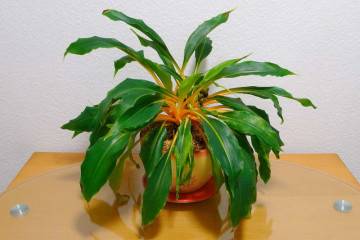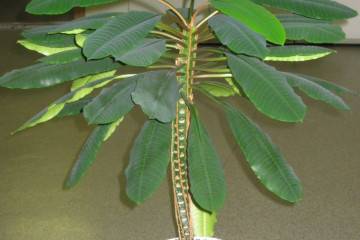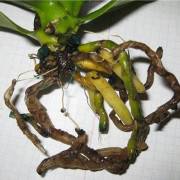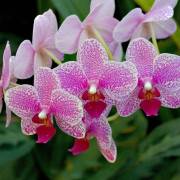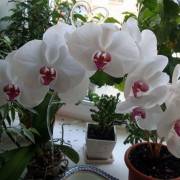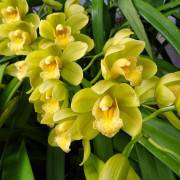Flower Lady's slipper - description, rules of care
Content:
Increasingly, you can see an unusual exotic beautiful flower on the windows of apartments. This is a visitor from the tropics, who feels well in our latitudes, one of the most unusual flowers on earth - the lady's slipper. It is rather inconspicuous until it blooms. Then it amazes with its unusual shapes and wonderful aroma. The flower's temper is rather capricious, but with good care, it takes root well at home.
What does a lady's slipper look like?
Botanists attribute the flower of Venus's slipper to the orchid family, the genus Cypredium (cypredium), named after the ancient Greek goddess - Cyprias (in Russian translation, she turned into Venus - the Roman goddess).
This perennial plant has a bright and juicy bouquet of leaves, a creeping rhizome with a network of diverging roots, an erect stem. The flower itself resembles the original shoe in shape, it is this similarity that gave the name to the flower.
Other names include:
- cuckoo shoe;
- Mary's shoes;
- bogorodicin's boots;
- ladies' shoes (in the North American version - moccasins).
The habitats of the unusual plant are the islands of Asia (south), Europe, as well as the forests of the eastern European part of Russia, Siberia, the North-East of Kazakhstan, Mongolia and China.
Common varieties
This family has up to fifty species that differ from each other, depending on the growing zone, 5 species grow in Russia, and all of them are listed in the Red Book.
The most popular varieties are as follows.
Pafiopedilum snow
Distributed in Southeast Asia. The flowers are small with snow-white petals covered with tiny pink dots, the leaves are spotty green, the lower part is purple-violet, almost blue.
Real slipper
Reaches a height of half a meter. The stem has 5 elliptical leaves. The flower is always large, the lip is yellow, puffy, the petals are dark purple.
Spotted or drip slipper
Found in the Urals, Siberia and the Far East. It has 1 flower with a diameter of 3 cm, the color of the petals is white with “droplets” of violet-pink color, the lower petal is greenish;
Paphiopedilum is pretty
Another name is bellatulum. There is a dark stripe in the middle of each leaf. And the speckled flower blooming in April has a light color, all covered with dark chaotic dots.
Healing properties
The flower is used for the manufacture of antispasmodics and antiepileptic drugs. It can also be used as a pain reliever for headaches and psychosomatic heart pains.As a psychotropic, preparations from the cuckoo's shoe flower are used to treat depression, insomnia, anxiety and fears.
In gynecology, this plant helps to normalize the menstrual cycle, restore the uterus after childbirth, and stop bleeding.
History of appearance
This unusual plant was first discovered in the south of Asia. Bouquets of flowers similar in description were presented to brides in Thailand. Thanks to its exotic beauty, its cultivation and breeding of new varieties began around the world.
The name is connected with the legend that once the goddess Venus during the rain retired with Adonis in a cave, and left her shoes at the entrance. The peasant, who saw them, wanted to pick up a wonderful shoe, but it immediately turned into a plant similar to the goddess's shoe.
Features of caring for a flower at home
For full development, the flower needs special care, which involves the creation of conditions close to natural conditions.
Temperature
Variegated orchid species are thermophilic, and low temperatures are contraindicated for them. Therefore, in room conditions, it is necessary to maintain from 23-28 ° C in summer, and 18-25 ° C in winter. If the flowers have large and green foliage, they can be kept in cooler conditions: 18-25 ° C for summer and 15-20 ° C for winter.
All types of orchids, including the lady's slipper, respond positively to changes in temperatures at night and during the day. This has a beneficial effect on the duration of their flowering and overall development. Daytime temperatures should be about 5 ° C higher than nighttime temperatures.
Lighting
The main condition for the correct lighting of the flower is the presence of diffused light for about 14 hours a day. In winter, with a short daylight hours, it is necessary to additionally illuminate the plant. However, direct hot sunlight is also detrimental to him - leaves brown spots on the foliage, and the buds may fall off. Therefore, it is important to consider a shading system, especially on the south side of the house.
Watering
The flower should be watered regularly and evenly throughout the year. Water must first be passed through a filter, allowed to settle and slightly warmed up to room (or slightly higher) temperature. It is necessary to water strictly the area of the roots, the water should be moistened only on the ground, its ingress on the leaves is extremely undesirable for the health of the orchid.
Spraying
Periodically (especially during hot periods), you can carefully spray the leaves of the lady's shoe. It is highly advisable not to touch flowers or unblown buds. It is important not to allow the newly processed wet flower to cool down - this is fraught with fungal infection of the foliage and aerial roots.
Humidity
The cuckoo's slipper prefers moist air; a humidifier is used for this purpose.
You can also put a flower pot in a bowl of warm water so that the soil itself is saturated with moisture, after which it is moved to a tray to drain excess liquid. The exposure time is different: for peat soil, a quarter of an hour is enough, for bark-containing substrates, 40 minutes are needed. Water can be replaced with a layer of moist moss or expanded clay.
Priming
Botanists do not recommend planting a plant in the soil from the garden, containing traces of organic or mineral fertilizers. Best of all, the lady's slipper will grow and multiply into humus from oak and walnut groves.It is advisable to spice it up with peat, sphagnum moss, perlite sand (quite a bit), as well as rotten remains of deciduous wood.
Top dressing
The beautiful orchid also needs feeding, which is better to produce with special mixtures. They are bred in clean, settled water according to the instructions and added to the root zone of the soil on a monthly basis.
Features of winter care
If the Venus flower is grown in the open field, then its aboveground part dies off with the onset of the cold season. Roots that are shallow underground and continue sap flow can be damaged by frost. Care consists in warming by mulching or covering.
For indoor orchids for the winter, it is also necessary to adjust the watering schedule and drastically reduce the amount of moisture compared to the summer.
When and how it blooms
Among the flowers of this species, there are differences in species, flower shapes and flowering times.
There are such popular types:
- Stemless - only 0.35 m long with one large flower and wide oval leaves.
- Ram-headed - also short, with thin and weak stems and small single flowers.
- Californian is a sturdy plant, height reaches 0.8 m, oval pointed leaves, 4-12 small flowers in inflorescences on pedicels of different lengths.
- large-flowered - has a thick and short rhizome, the stem grows to a height of no higher than 0.45 m, the flowers are large, single, painted in purple or lilac-yellow colors.
- Tufted - with pubescent stems, short leaves, there are no more than 4 flowers on an inflorescence.
Flower shapes
If the flower of a lady's shoe is large, then its diameter is from 6 to 8 cm. The petals are elliptical or lanceolate and have a purple (with pinkish veins), white, white-pink, yellowish-green coloring. They are slightly curled and hang down.
Each flower has three stamens, while the third is overgrown, covering the pharynx. The lip of this type of orchid is swollen, resembling a bag, and is brightly colored.
Flowering period
The lady's slipper is characterized by irregular flowering. For the first time, the plant begins to bloom in the tenth to seventeenth year of life, and also tends to periodically take "breaks" for rest. Duration of flowering is about 4 weeks, from mid-spring to early summer (depending on the species). A couple of months after pollination by bees, seed ripening begins.
Changes in care during flowering
During budding, the orchid needs additional nutrients. However, with an excess of fertilizer, the flower can throw off the buds from the peduncle and even wither.
Pruning
In general, this plant reacts painfully to slices. However, sometimes it is necessary to remove some branches. For example, when the substrate dries up, the lower leaves turn yellow and dry, they cannot be left on the flower. The procedure is carried out with sharp processed scissors.
How the Venus slipper reproduces
There are several ways to propagate a wonderful flower.
Germinating seeds
The seeds of this orchid are very small, dusty, each weighing no more than a thousandth of a gram. They ripen in a small box. They are half filled with air, so they can be sprayed by the wind over long distances. However, the low weight leads to the lack of reserve nutrients for the embryo.
Rooting cuttings
Most easily, the lady's slipper reproduces by cuttings (with three shoots). With this division, it is better to break off the cuttings with your fingers than to cut with a knife. You can even just twist it.
The most suitable time for propagation by cuttings is the end of summer and mid-October. A stalk with two or three daughter buds is placed in a substrate and hibernates like this, while in the spring new shoots sprout from it.
Air layering
At a sufficiently high temperature in the room and sufficient fertilization with nitrogen fertilizers, orchids give side shoots (or "babies") - these are small new "shoes" that grow to adult plants.
It is necessary to spray such a flower abundantly so that the layers sooner give roots and they can be separated.
Transfer
Once every two to three years, the lady's slipper should be transplanted. This manipulation should be done very carefully and do not use ceramic pots, since the roots of the plant cling to their surface from the inside and are injured during transplantation.
It is best to transplant after flowering, then adaptation will be easier. During the procedure, the root system is carefully examined and damaged roots are removed.
Possible growing problems
In general, Cyprediums are resistant to disease, but are sometimes attacked by pests such as mealy worms or mites.
Drops buds and leaves
The buds can fall off for the following reasons:
- insufficient lighting;
- a lot or little water;
- dry air;
- getting into a draft;
- temperature drops;
- diseases or pests.
Leaves turn pale
The foliage can become discolored and too sluggish due to flooding of the roots.
The tips of the leaves dry
If the flower is constantly exposed to direct sunlight, its leaves may dry out or turn yellow.
The lower leaves fall
Leaves from the lower part of the stem can fall off if the conditions of detention are violated: improper watering, poor lighting, overheating and improper feeding.
Pests
Pests (scale insects, mealybugs, aphids, orchid mites) weaken the plant, from their negative impact, spots and dots appear on the foliage, sticky bloom or whitish fluff.
To combat, use soapy water or insecticides.
Signs and superstitions
Popular beliefs say that the orange orchid makes a person more active and creative.
It is believed that if the lady's slipper is actively blooming, the plant is under severe stress.
Some people believe that orchids "drive" men out of the house because they take away masculine energy. In fact, this species is a "female" flower, which gives the hostesses even more beauty and femininity.
When you look at a flower of the genus of orchids, which looks like an intricate shoe, you are amazed at its elegance and extraordinary coloring. This adorable flower, called the lady's slipper, is well-bred at home. With proper care, it pleases the owners for a long time with bizarre colors, shapes and a subtle smell.






